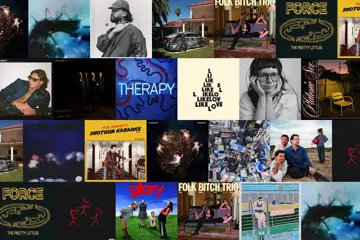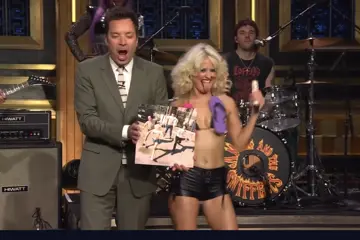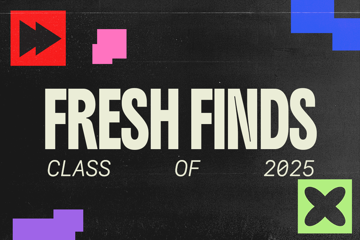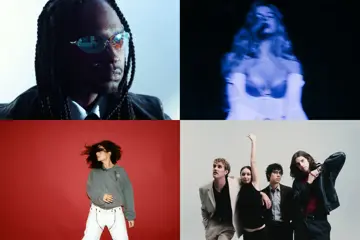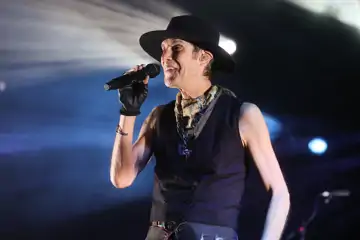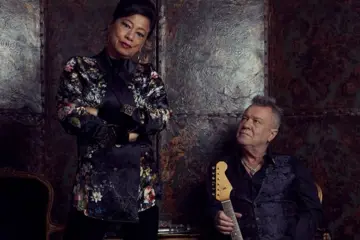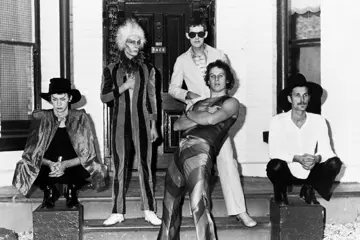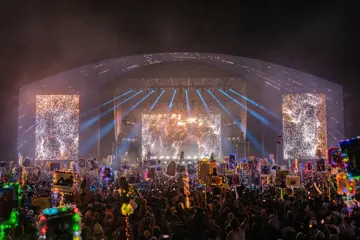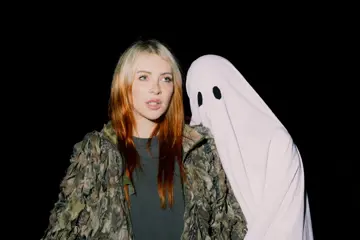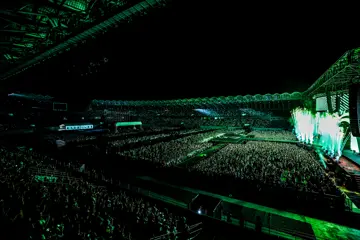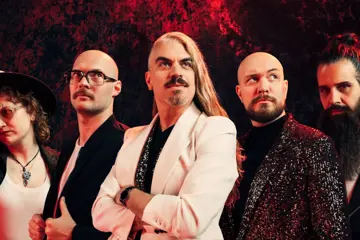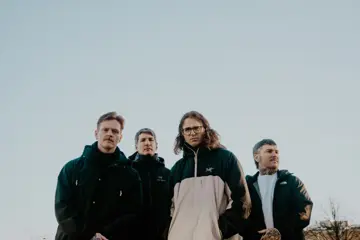Ian “Molly” Meldrum jokes: “I owe it all to drinking.”
About 6.15 pm on a cold August day in 1974, Molly was behind the wheel of his white Celica, driving home to South Yarra after hosting another episode of his kids’ show, Anything Can Happen, at Channel Seven in Melbourne. Racing down Domain Road, he decided to pop into the bottle shop at the Botanical Hotel and get a bottle of Johnnie Walker.
Unsurprisingly, Molly is not the world’s best driver. He did a crazy U-turn between two trams and mounted the footpath. The commotion caught the attention of two young TV producers, Michael Shrimpton and Robbie Weekes, who were at the hotel, planning a new pop show for the ABC.
Concerned about the ABC’s ageing audience, the organisation had decided to start a music show to attract younger viewers. Shrimpton and Weekes were tasked with the job. But as they sat drinking pots of beer at the Botanical, the theatrical duo – who were not big fans of pop music – had a problem: Who would select the acts to appear on the show?
And then Molly drove up.
“Jesus fucking Christ,” Weekes exclaimed. “That’s the c*nt we need!”
Weekes had worked with Molly at Channel O when the young Meldrum had been part of the team miming the hit records of the day on the ’60s pop series Kommotion. He’d been an awkward TV performer, but Weekes knew he had a passion for music, particularly Australian music.
So, Molly became the new show’s talent coordinator.
He had actually been campaigning for a local music show for more than a year. In July 1973, Molly wrote in the pop paper Go-Set: “When I tried to persuade my colleagues who write television pages for the dailies and the Sunday papers to put editorial pressure on the television stations, they did point out to me that the budget to stage such a show would be astronomical and the timeslot ratings wouldn’t justify the cost.
“They did, however, say that they thought the ABC should at least give an hour a week to such a program. Well, I ask you, who do you go to to convince the ABC? Oh yes, they could afford to present a pop show because, after all, it’s our money they’re using.”
The ABC’s only pop show in prime time was GTK, which ran for 10 minutes on weeknights. And when it was announced it was being axed at the end of 1973, Molly wrote: “Well, that’s the last straw. Australian television has finally hammered in the last nail. Australian artists desperately need a television outlet.” He launched a petition that helped save the show.
When Weekes introduced Molly to his fellow producer, Shrimpton was struck by how inarticulate he was. “For God’s sake,” he confided to his colleague, “the man can’t put two sentences together.” (Later, Shrimpton would famously describe Molly as “a collection of nouns searching for a verb”.)
Together, Shrimpton, Weekes and Meldrum created Countdown. They toyed with the name “Six O’Clock Still Rocks” as a link to Johnny O’Keefe’s pioneering music show Six O’Clock Rock. Then Weekes suggested “Countdown”, which referred to the fact the show was counting down to the week’s number one song. “That, and the moon landing,” Shrimpton recalled. “It was the buzzword of the decade.”
The unlikely trio had six half-hours to get it right.
Even though the show became forever linked with the Sunday 6 pm timeslot, the first Countdown actually went to air on a Friday at 6.30 pm on November 8, 1974.
And Molly was nowhere to be seen. The guest host for the first episode was 3UZ DJ Grant Goldman, who was paid $140 for the gig.
“It was my feeling that because music had been the provenance of radio until this point, we had to bring in DJs because they had the audience,” Shrimpton explained. “Hitch them to your wagon, and they would talk about you and themselves for a week. And they did.”
Goldman had some TV experience in Brisbane, hosting Jukebox Jury and a Young Talent Time-like show called It’s A Small World. “I knew that Countdown was going to be a special show because Michael and Robbie were like two-week-old puppies,” he remembered. “They were very excited. When they sold it to me, they said, ‘This is going to be the biggest thing!’”
The line-up for the first show was all local – Skyhooks (performing Living In The ’70s), Sherbet (Silvery Moon), Johnny Farnham (One Minute Every Hour), Daryl Braithwaite solo (You’re My World), and Linda George (Mama’s Little Girl).
Though he wrote Living In The ’70s, Skyhooks bass player Greg Macainsh didn’t appear on the show – he had hepatitis and was in the infectious diseases ward at Fairfield Hospital. He never got to see the episode – there were no home video recorders in 1974. Macainsh’s place in the band was taken by Red Symons’ girlfriend, Jenny Keath, who dressed up like the bass player. No one seemed to notice.
The birth of Countdown coincided with the arrival of colour TV, which seemed appropriate. Our drab, black-and-white lives were over. Suddenly, we were dreaming in colour.
At the end of 1974, each network had a limited licence to test colour transmission. The ABC had purchased the PAL colour TV system, and a team of German experts visited the station to install the technology. They told the drama department: “less is more”.
“So when Bellbird first appeared in colour, it was in deep mourning,” Shrimpton recalled. “There wasn’t a primary colour to be seen; everyone was wearing beige. Robbie and I knew that the way to go was to throw up all over them. Let Bellbird do Monday to Thursday in the same timeslot, and we’ll appear on the Friday and just go ‘Chuck!’”
When the pre-recorded show went to air, Shrimpton and Weekes were at Myer in the city, where hundreds of people had gathered to check out the new colour TVs in the television department.
Molly watched the show in an office at Channel Seven after hosting his kids’ show, while Goldman hired a colour TV for the weekend and watched his work with 3UZ’s programmer Bill Gates, the radio DJ who was one of the inspirations for the Bee Gees’ name.
“What I learned that day was that wearing a striped shirt wasn’t a good idea,” Goldman smiled. “None of us knew anything about colour TV; my shirt made it look like I was moving all the time. And yes, I had the ’70s mo and long hair – I looked like I was a member of the Village People.”
Sadly, no tapes of the early episodes exist. For ABC, this was just another throwaway pop show, so they reused the tapes—a cultural crime.
However, the ABC executives renewed the program. Six episodes became eight, with the last two being one-hour shows. “But by the end of 1974, I thought the show was over,” Molly reveals. “We’d had our run. Then Michael called me. ‘It’s rather good news – Countdown is going to become a series for a year.’
“I was stunned.”
The first Countdown for 1975 was at midnight on March 1, “C-Day,” when colour TV was officially launched in Australia. Again, Molly was not seen. The show was hosted by Johnny Farnham and featured Skyhooks, Sherbet, Denise Drysdale, Stevie Wright, AC/DC, Linda George, Hush, Debbie Byrne, Captain Matchbox, Ray Burgess, and William Shakespeare, whose My Little Angel was the nation’s number one song.
“Part of the reason he [Molly] went on air was because someone failed to turn up,” Weekes revealed. “He was like our standby compere. He was hopeless, but people seemed to like him.”
And when Shrimpton wanted to inject some “editorial clout” into the program, following criticism it was “too commercial”, he decided that Molly should present a weekly segment – The Rock Report with Ian Meldrum. The first week went according to plan. The next report was introduced by that week’s guest host, John Paul Young. Shrimpton issued him with strict instructions: “Do not, under any circumstances, call him Molly.”
Of course, JPY ignored the orders. “Now here’s boring old Molly,” he said, “with his boring old humdrum.”
The name stuck – and Humdrum became an integral part of the show.
Whatever way you want to look at it, this was a golden age for Australian music, with Skyhooks rewriting the record books with Living In The 70s, the rise of Mushroom Records, the start of 2JJ, the arrival of RAM and Juke, and acts such as JPY, Sherbet, AC/DC, Hush and Marcia Hines.
And Countdown was at the forefront.
“Where will we be in 50 years?” Brian Mannix asked in one of Countdown’s greatest hits. Well, 50 years on, we’re still talking about the show that changed Australian music forever.
Molly looks back and smiles. “I owe so much to Michael Shrimpton and Robbie Weekes. We had a wonderful time.”
Countdown 50 Years On premieres on ABC TV at 7.30 pm on Saturday, November 16.


